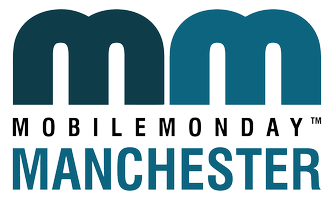 So here’s the mother of all IPOs then, and it was coming a long way. The web was buzzing, today analysts of any couleur are commenting and reading through the fine print of Facebook’s registration statement (known as the S-1) in order to find valuable nuggets of information that they had not had before and myriads of bloggers and journalists drool over the new wave of young wealthy people in the Valley.
So here’s the mother of all IPOs then, and it was coming a long way. The web was buzzing, today analysts of any couleur are commenting and reading through the fine print of Facebook’s registration statement (known as the S-1) in order to find valuable nuggets of information that they had not had before and myriads of bloggers and journalists drool over the new wave of young wealthy people in the Valley.
No mobile revenue
Whilst I’d love to join into this frenzy, I want to focus on one point in the S-1 that caught my eye, and which might pose some interesting challenges for the social networking giant going forward, namely the large abyss between mobile use of the site and revenues derived from it. You will likely have read about the huge amount of Facebook users regularly using the site from mobile devices. According to the company itself, 425m active users (out of a user base of 845m) accessed the site using mobile devices; that’s more than 50%. And yet, Facebook does not derive “any meaningful revenue” (quote from their S-1) from it.
Why (these) ads don’t work as well
This is, of course, because it – thus far – did not find a good way to display ads in their various guises to mobile users. The screen real estate is scarce and it would be easy to destroy the user experience by doing so. However, with that growth in usage, they may have to review this approach. The challenge is then to successfully marry user experience on a small(er) screen with revenue-generating activities. And, alas, the latter are so far mainly display ads of various sorts. How successful will those be? My guess is not very much. It is likely one reason why Facebook so far has shied away from using them: it might just destroy the user experience to an extent that its users would be seriously upset.
And yet, it is only the latest case of highlighting one of the common fallacies of migration from web to mobile (and I am not even saying they are wrong to move that way; their user growth and occuption of that space will likely counter-balance that; I think it was Accel’s Rich Wong who said that it is easier to find revenue streams once you have 100’s of millions of users than to find 100’s of millions of users with a (pre-)defined revenue stream). Nevertheless, none of us would watch a TV commercial showing you a static picture and someone reading something out from the off (this is exactly how TV advertising kicked off). We were not overly thrilled by early attempts of online advertising; they were merely an attempt to convert billboards and printed circulars to the digital realm. It was not until Google’s AdWords that online advertising really hit it off. So why would we now be content with a mere port from another form of media?
The Japanese way?
Japan has shown that there are other ways. Japan’s GREE reportedly records similar revenues from about 5% the user base than Facebook does. It does so mainly with virtual currencies and goods (and, yes, it has moved to a slightly different target market); users can customize their experiences within that social network by buying “stuff” to embellish their avatars, play, use, customize content, etc. Japan has always been something of the Galapagos Islands when it comes to mobile usage: what worked there didn’t often work elsewhere (anyone remember i-mode?). However, we are seeing a similar effect on smartphone applications: 65% of the top-grossing apps these days use some sort of “freemium” feature. This approach might be too late for Facebook now though. Its users would be up in arms would they start charging for features that users have come to see as free.
I am fairly confident that the good folks of Facebook are here to stay but I am still thrilled to see if, when and how they will begin to adapt. With all the very smart people in the company, we may just see the next wave of mobile monetization, and I wonder what it might be…

 If you are in the North-West of England and have nothing to do or, rather, nothing really, really important to do, you may want to drop in for our latest
If you are in the North-West of England and have nothing to do or, rather, nothing really, really important to do, you may want to drop in for our latest  Every now and then something comes and just delivers. These moments feel awesome, don’t they? I had one such experience today, so let me share it.
Every now and then something comes and just delivers. These moments feel awesome, don’t they? I had one such experience today, so let me share it.  A fairly wonderful conference will open its doors on 27 October in London, UK, namely
A fairly wonderful conference will open its doors on 27 October in London, UK, namely  There has been (as you may have sharply derived from this post’s title) a
There has been (as you may have sharply derived from this post’s title) a  The challenge is to find a universal solution, I suppose. Jenson focuses merely on apps that – arguably – make a user’s life better if and when he/she is out and about and is looking for utilities to help mundane tasks/etc. There are tons of fairly one-dimensional apps for that: a retailer app for their catalogue, London tube map, some couponing app, a mobile banking app, apps using NFC, Bluetooth, camera (QR readers) and more. There will also be more complex ones: fancy AR-powered things, things like Foursquare (anyone near?), etc, etc. So, is this painful? Yes, it is. Would it be better if there was a seamless universal (cloud-based) solution that would make it “just so”? Oh, by all means.
The challenge is to find a universal solution, I suppose. Jenson focuses merely on apps that – arguably – make a user’s life better if and when he/she is out and about and is looking for utilities to help mundane tasks/etc. There are tons of fairly one-dimensional apps for that: a retailer app for their catalogue, London tube map, some couponing app, a mobile banking app, apps using NFC, Bluetooth, camera (QR readers) and more. There will also be more complex ones: fancy AR-powered things, things like Foursquare (anyone near?), etc, etc. So, is this painful? Yes, it is. Would it be better if there was a seamless universal (cloud-based) solution that would make it “just so”? Oh, by all means. It is possible to draw a map of this (and I would if I possessed more artistic skill) where you could derive on what is right for you: if you need access to hardware APIs (camera, 3D acceleration, Open GL ES, etc), native might be your way (one of the reasons why you are not seeing higher-end HTML5 games in large numbers yet). If you capture light-weight information-heavy content that relies on dynamic updates, a web “app” might be good for you, in other cases, a native app with some functionality coupled with a container for web functionality might be the right way.
It is possible to draw a map of this (and I would if I possessed more artistic skill) where you could derive on what is right for you: if you need access to hardware APIs (camera, 3D acceleration, Open GL ES, etc), native might be your way (one of the reasons why you are not seeing higher-end HTML5 games in large numbers yet). If you capture light-weight information-heavy content that relies on dynamic updates, a web “app” might be good for you, in other cases, a native app with some functionality coupled with a container for web functionality might be the right way. Tonight (11 July),
Tonight (11 July),